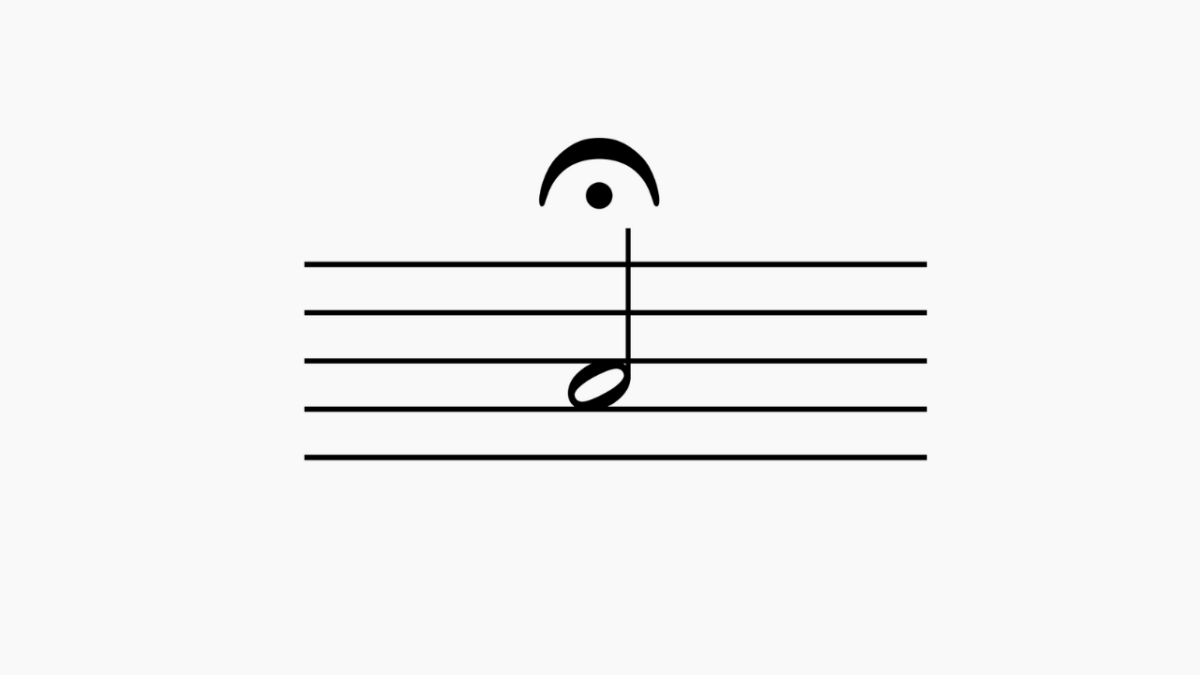Fermata is a symbol in sheet music that indicates to “extend the note appropriately.”
The shape is typically a “half-circle arc with a dot (●)” underneath, symbolizing the idea of “freely extending the length.”
It originates from the Italian word “fermare,” meaning “to stop,” and it allows for a pause or creates a lingering effect, either during a piece or at the end.
Features
Extend notes or rests appropriately
When a note (or rest) has a fermata, it is extended slightly (or significantly) beyond its original duration as indicated on the sheet music.
However, extending it too long can disrupt the flow of the entire piece, so it’s important to find a balance based on the character of the piece and the performer’s interpretation.
Composer’s intention and performer’s sensibility
Since fermata does not specify an exact duration, the performer’s choice of how long to hold the note can change the nuance.
If there are instructions from the conductor, they are often followed, but in solo piano, the performer has greater discretion.
Recommended Articles
How to play Fermata: Beginner’s Step-by-Step

Understand the Original Note Value
First, make sure to accurately understand the original duration of the note (or rest).
Even with a fermata, if you don’t understand the basic time signature or tempo, it will be difficult to judge how long to extend the note.
Step Away from the Metronome
When practicing fermata, try stepping away from the metronome and rely on the flow of the piece and your ear to find the right moment to stop.
Start by experimenting with shorter or longer pauses, and find a duration that suits the mood of the piece.
Be Aware of Natural Breathing
When extending the note, try syncing it with your natural breath to more easily feel how long to hold the note.
Especially at phrase endings or section breaks, it helps to imagine taking a natural breath, making it feel smoother.
Frequently Asked Questions (Q&A)
-1024x684.png)
Q. I don’t know how long to hold a note with fermata…
Generally, the interpretation is to “take a slightly longer duration than the original note length and hold it to match the piece’s mood.”
There is no specific number of seconds or beats, so focus on the atmosphere of the piece and the break in the phrase, and use your own sense of timing while playing.
Q. How should I play a fermata on a rest?
Since there is no sound at that moment, think of it as holding the silence in the space for a bit longer.
The “pause” you take can strongly grab the listener’s attention or create a dramatic start for the next note.
Conclusion
Fermata is a symbol in sheet music indicating to “extend a note or rest appropriately,” and its defining feature is that the performer (or conductor) can freely decide the length of the note.
By holding the note properly, you can emphasize the lingering effect or build tension, but extending it too long may disrupt the tempo or structure, so balance is key.
Beginners should first accurately understand the note values in the sheet music, and then practice holding the fermata just a little longer. Syncing with natural breath helps to feel the right duration.
Use the points from this guide to master fermata and add depth to your piano playing.

